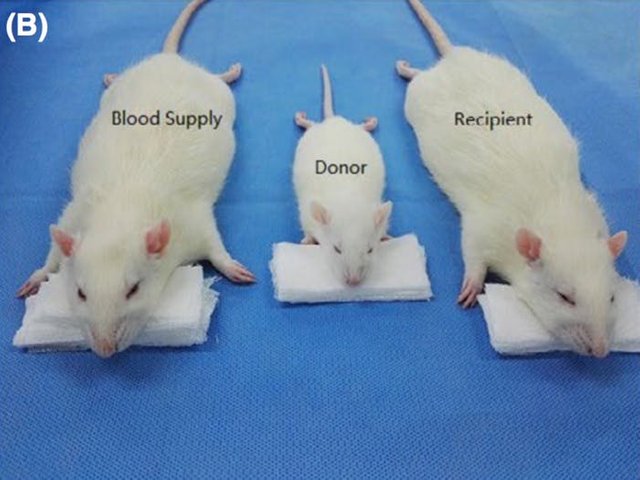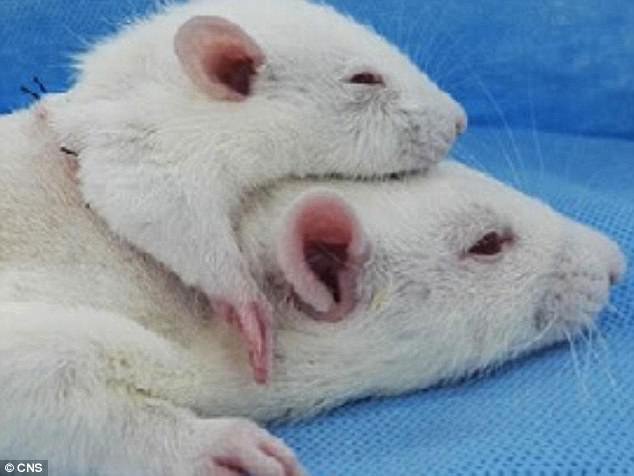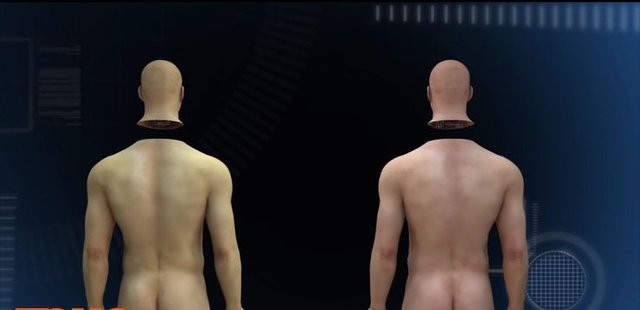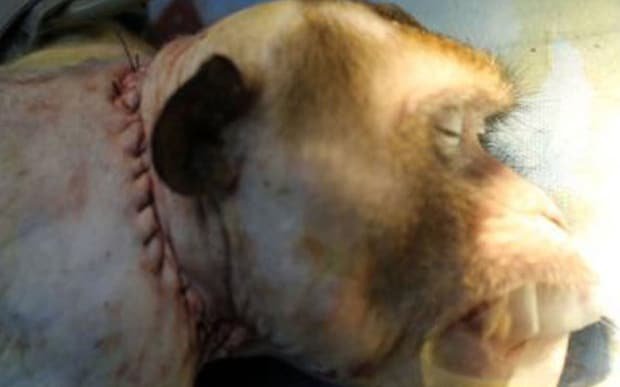With Successes In Mice, Dogs And Monkeys, Head Transplant Has Been Proposed For Humans & Scheduled For December, 2017
Greetings Steemians. The world of science is such a verse area with huge possibilities. In science, nothing is impossible but could only be influenced by time factor. From building a machine that could take one to the outer space, developing sophisticated warfare gadgets with possibilities to wipe out an entire population, bioprinting of human body parts, to complete organ transplantation, advances in science have constituted a major influencer of how humankind has developed over time.
Today, we are no longer talking about how possible is a whole organ transplant; we do not wonder anymore if kidney or liver transplant or other related surgical procedures are a possibility. Because it has been proven beyond every reasonable doubt these things are almost 100% possible. So we no longer raise eyebrows at their mention. But most of our forebearers who lived when these breakthroughs were first studied, announced or proposed never believed they would be a reality someday. And even attacked the proponents.
Just in much the same way, tantrums have been thrown at Sergio Canavero an Italian Neurosurgeon, who along with Dr Xiaoping Ren of Harbin Medical University had announced in 2015 that they would carry out first human head transplant possibly in December 2017,assuming all things being equal.
The idea is that someone paralysed from the neck down, for example, could have their head connected to the body of someone who is brain dead, restoring their ability to move. Source
Initially, one Russian Computer Scientist named Valery Spiridonov who has been afflicted by Werdnig-Hoffmann Disease since the age of one were also named in the statement as the willing patient who has volunteered his head for the procedure. In a much later announcement, however, it was stated that Mr Spiridonov would no longer be the first transplant patient. Rather, a new transplant patient would be selected from among Chinese nationals at the right time.
The announcement generated myriads of reactions from many quarters particularly from ethical apologists and cultural stereotypes who had questioned the rationale behind such a scientific ambition. And even among scientific community...
'I would not wish this on anyone. I would not allow anyone to do it to me as there are a lot of things worse than death'; Dr. Hunt Batjer had commented in 2015 in the Aftermath of the announcement. Source.
Obvious Challenges & Preliminary Experiments In Preparation For First Human Head Transplant Surgical Attempt
Challenges
Of course, going ahead with such a complex procedure would throw up a lot of risky challenges. Concerns lie on the ability of these experts to keep the donor's brain cells alive during the interim before transferring on to a waiting body, joining together the severed spinal cords and reviving them to transmit impulses again as well as preventing possible rejection of the new head. Where as one may rightly argue that keeping brain cells alive and preventing possible rejection of the new head may not constitute much of a challenge as advances in medical science may handle these two concerns. However, no doctor has been able to reconnect a severed spinal cord or repair an injured one.
Preparative experiments
Following these concerns, Mr Canavero and his corroborator friend, Dr Ren, have been carrying out a series of preparative steps in anticipation of bigger task ahead.
Bicephalic experiment on rat
In an update a few months back, the controversial researchers claimed that they have been able to graft a smaller rat head onto the neck of a bigger one in a bicephalic experiment, which was intended to how they could avoid brain-damaging blood loss and immune rejection through maintaining a steady supply of blood to the head, in future event of human head transplant.


Of the three rats that were used in the study, which was published in the journal CSN Neuroscience and Therapeutic, one was the donor, the other, recipient. The third rat was used to provide a steady supply of blood to ensure the donor head brain cells are kept alive and was not rejected in an immune reaction.
The study authors which included Canavero and Ren observed in conclusion that no significance damage was done to the brain tissues as evidenced by detection of painful sensation and corneal reflex in the donor brain tissue.
Spinal cord dissection experiments on rat and dog
In September 2016, Canavero and his friend, Ren, released a series of three papers to New Scientist in which they claimed to have used solutions of PEG (Polyethylene glycol) and Graphene nanoribbons to successfully reconnect 100% dissected spinal cord in rats and 90% dissected spinal cord in a dog.
The team severed the spinal cord of 16 mice. They then injected PEG into the gap between the cut ends of the spinal cord in half of the mice, while the rest were injected with saline. After four weeks, they report that five of the eight mice in the PEG group had regained some ability to move, compared with none of the control group. The other three PEG-treated mice died, as did all those in the control group. Source
In the experiment involving a dog, the scientific team had a dog's spinal cord severed to 90% degree and then treated with a solution of PEG...
The following day, the dog was completely paralysed, but after three days, the team reports minimal movement in all four limbs. After two weeks, the dog was able to drag its hind limbs by its torso and forelimbs, and during the third week, it was able to walk. The team claims that the dog began to grab objects, wag its tail and resume a normal life. There was no control in the experiment. Source
Source
All these claims, however, have not been revalidated through peer reviews of these researchers' works.
Monkey head transplant experiment
In a Skype aided press release to motherboard reporters in Jenuary, 2016, Dr Canavero claimed that his corroborative team in China being headed by Dr Ren had successfully carried out head transplant on monkey in what appeared as a rework of an American neurosurgeon Robert White who attempted a monkey head transfer in the 1970's. Dr White was the first scientist who successfully carried out a monkey head transplant surgery. The monkey ate, felt touch and was also able to see. However, it survived for only 9 days after the surgery and died.
Source
According to Canavero during the press release, the monkey survived for 20 hours before being deliberately killed by the team out ethical concerns. However, because there is no evidence to confirm this claim other than the stitched monkey head photo, Canavero was severely criticized for being quick to make the press release even when the work has not been properly documented and published in appropriate scientific journal.
Conclusion
Many medical professionals do not seem to buy into Dr Canavero and his team's idea with some describing it as outlandish and highly impossible. In one extreme, Opposition to Canavero's stubbornness to carry on with his plans to perform human head transplant had seen him lost his job with University Hospital Turin in 2015.
I am of opinion that for a man to have been so strongly convinced in a set of ideas as to have sacrificed his job...I think such ideas or claims shouldn't be waved off as a wishful thinking or a hoax whether they are going to be actualized this year or not.In science, everything is possible.
Thanks for reading.
Follow @eurogee, the Steemivangelist and @euronation
References for further reading




When you think you've seen or heard it another interesting and amazing story pops out.
That's correct @brainz
That is the good things about life
Quite revealing, this is indeed a great scientific works. For me this experiment is possible but may need to be tried more on other higher animals before human. Thanks for this great post.
Welcome @dubem-eu. Everything is gradual.
Like seriously is a mind blowing
Hahahahahsh lols really
What makes a transplant "effective" is open for definition. We can keep a heart beating in a dish with electrodes, so just keeping a head alive with bloodflow is not impressive. But whether it's a "success" or not, I ask why? Is this freak science? Everyone is talking about it like it's a noble thing. Maybe in a pragmatic way, it's cool, but the freakishness of attempting this and being successful nauseates me.
Hi
I appreciate your comment. But one thing you must appreciate is breakthrough in being able to join spinal cord would help spinal cord injury victims. Thats one thing. Another thing is that..
Sometimes people get paralyze from head down while others may suffer from incurable
brain cancer. Under such a situation, instead of losing two persons just like that, both individuals can reach agreement and the procedure carried out on them. In such a situation, the head donor is the one to enjoy everything. He can think and recall events of TV every past. But the one who donated body would just be lost in history.
The world we live in is full of possibilities.
@eurogee
This is fantastic. I hope the families of the donor will accept.Thanks for sharing your findings and your style of presentation is commendable, boss
Thanks my sis
Hope it succeeds and am sure it will